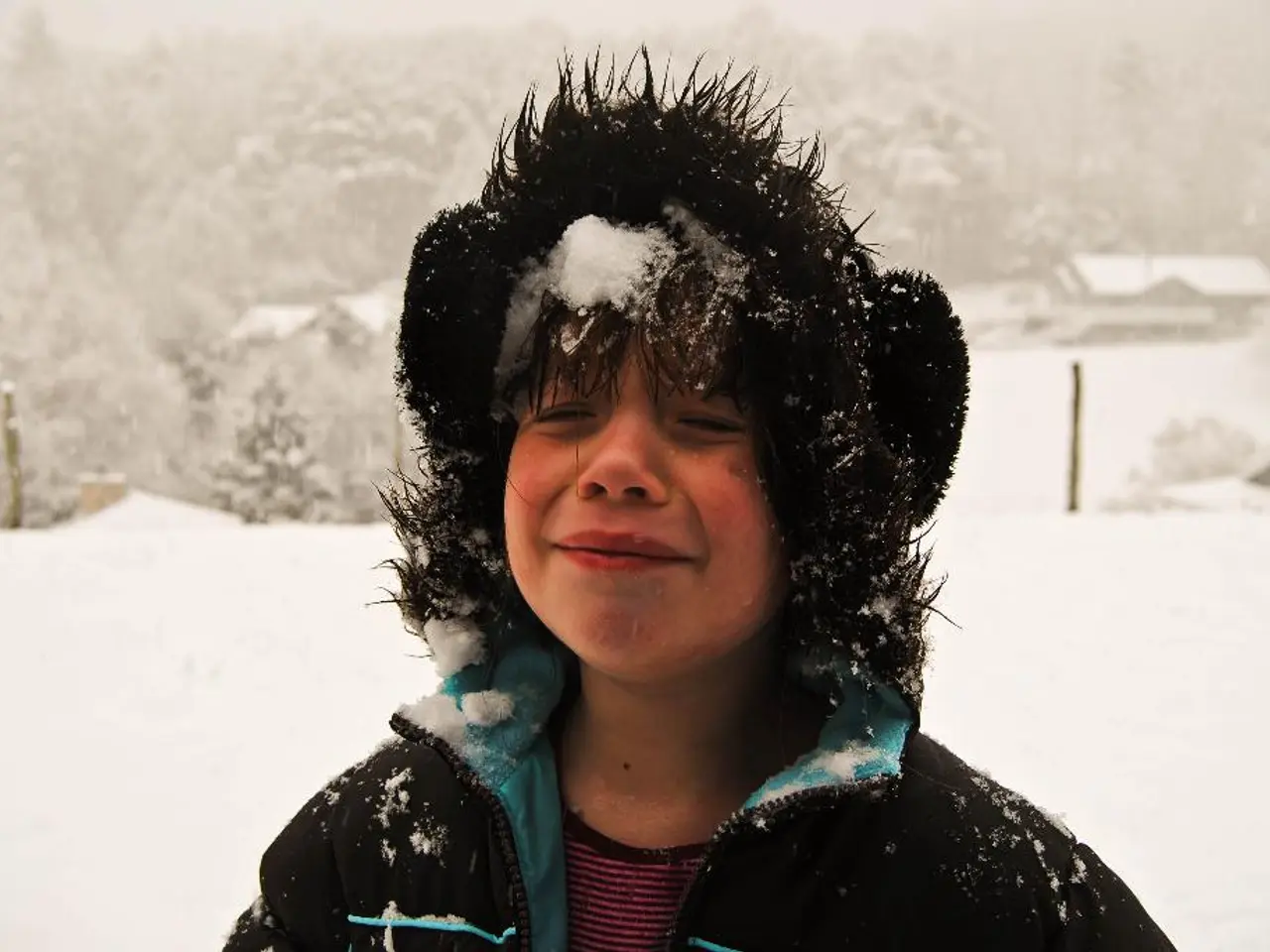Guide on Recognizing Child Anxiety and Possible Coping Strategies
In the realm of childhood development, anxiety is a common concern that affects not only adults but also children. While it is more prevalent in later years, it is essential to remember that anxiety can impact children as well.
Anxiety in children manifests as excessive worry or fear that interferes with daily activities, school performance, or social relationships. Common signs of anxiety in young children include frequent crying, hypersensitivity, excessive worry, sleep problems, angry outbursts or tantrums, avoidance of activities, physical complaints, school struggles, and physical symptoms like racing heart and trouble breathing. In older children and teenagers, signs may include test nervousness, panic attacks, social withdrawal, refusal to attend school, and seeking constant approval.
The types of anxiety disorders children may face include but are not limited to generalized anxiety disorder (GAD), separation anxiety, social anxiety, and specific phobias. GAD is characterized by excessive worry about school, friendships, health, or future events, and sometimes perfectionism or fear of making mistakes.
Anxiety in children can begin early, often emerging during childhood developmental stages when normal worries or fears may intensify beyond typical levels and interfere with daily life. Signs such as separation anxiety can be seen in very young children, and sleep issues connected with anxiety appear in children aged 6 and older.
Managing anxiety in children involves a series of steps. Step 1: Identify the Specific Worry involves helping the child get specific about what they're worried about. Step 2: Validate Their Emotions involves letting the child know that uncomfortable emotions are part of life and they can still do tasks or go to school despite feeling anxious. Step 3: Evaluate the Worry Together involves teaching the child to test their worries instead of trusting them. Step 4: Set Boundaries Around Worry Time involves setting limits on how long discussions about worries should last. Step 5: Help Them Calm Their Body involves using physical strategies to help the child cope with their anxiety.
Creating a supportive home environment is crucial in managing childhood anxiety. This involves maintaining predictable routines, monitoring and filtering media exposure, prioritizing one-on-one connection time, helping the child face fears gradually, and building independence through small challenges.
If you notice persistent signs affecting your child's daily function, seeking professional evaluation and support can help children develop coping strategies and manage anxiety effectively. According to the Centers for Disease Control and Prevention, one in 10 children, ages 3 to 17, have a diagnosed anxiety disorder.
It is important to remember that while parenting patterns can contribute to a child's anxiety, it usually develops from multiple factors working together. Therefore, a comprehensive approach to managing childhood anxiety, combining professional help, parental support, and effective coping strategies, can significantly improve a child's quality of life.
*Note:* This synthesis is based on sources from 2025, reflecting current clinical and developmental understanding of childhood anxiety.
[1] Anxiety and Depression Association of America (ADAA) [2] American Psychological Association (APA) [3] National Institute of Mental Health (NIMH) [4] Child Mind Institute
In light of the multifaceted nature of childhood anxiety, it's crucial to incorporate mental health strategies in health-and-wellness discussions, as anxiety can impact various aspects of a child's life, such as school performance and social interaction. A comprehensive approach for managing children's anxiety involves identifying specific worries, validating emotions, evaluating worries together, setting boundaries around worry time, and helping them calm their bodies, as suggested by the four steps outlined for managing anxiety.




